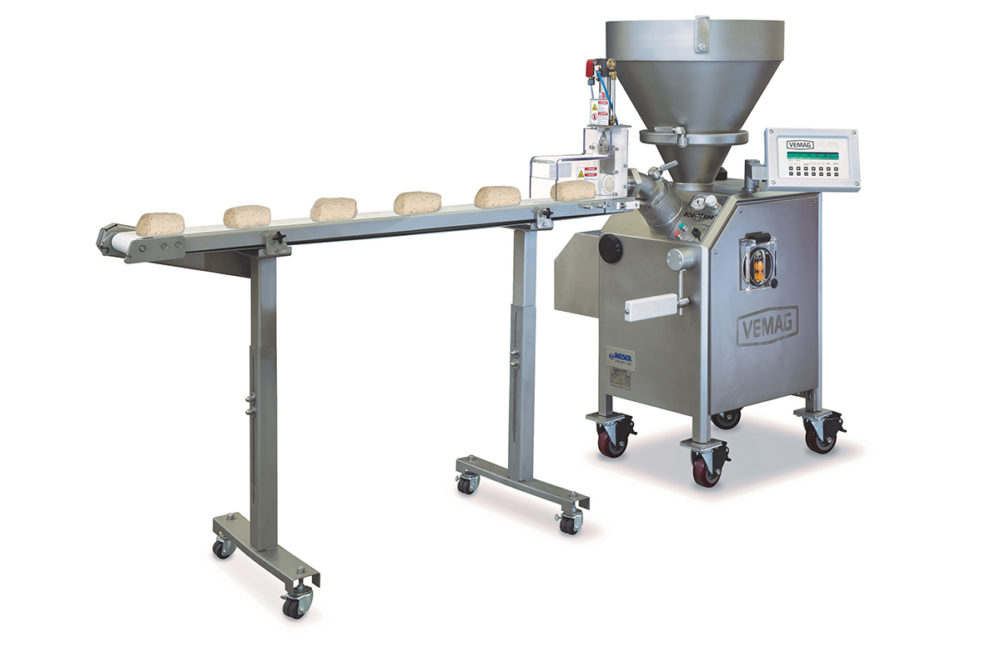Detroit-style pizza has become so hot and trendy that even Pizza Hut introduced four varieties earlier this year. Automating the process for the retail freezer case, however, can be tricky.
“Detroit-style pizza is typically a square-cut, thick-crust pizza baked in a deep rectangular pan,” noted Jeff Zeak, national development manager, bakery, at Reiser. “The dough is garnished with cheeses and other desired toppings with a light application of tomato sauce on top in splotchy dollops or thick-line racing stripes. The resulting baked crust has a light, fluffy interior with a crispy, fried bottom crust layer. During baking, the cheeses flow around the side edges of the crust where they caramelize and give a slightly burnt taste that is associated with Detroit-style pizza.”
Typically, bakers divide, round and sheet the conventional dough before it’s placed into pans. However, Alexander Weissbach, head of technology, product management and Rondo’s Dough-how Center, noted that sheeting could also be used, much like in making other similarly thick flatbreads.
“Rondo is having a tremendous experience in producing focaccia, so we know how to precisely sheet, cut and pan that type of dough,” he said.
Dino Cantore, master baker at Minipan, said the secret to the Detroit-style pizza involves the amount of cheese used.
“If you triple the amount of cheese on the surface, this melts and browns, protecting the dough from burning,” he said. “The cheese oil comes out and fries on the edges while the base of the pan has time to reach the proper temperature and bake the dough. The cheese does not melt. Rather, it toasts and becomes crunchy.”
This article is an excerpt from the October 2021 issue of Baking & Snack. To read the entire feature on Pizza & Flatbread, click here.




